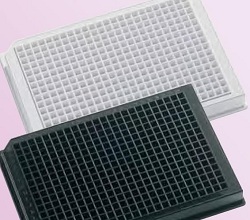
Krystal assay plates from Porvair have glass bottoms for clear vision
PORVAIR’s Krystal assay plates have an upper part made of polystyrene and a base plate made of a sheet of borosilicate glass, and says the company are proven to give higher performance for fluorescence assays, luminescence detection, scintillation counting, and high-resolution microscopy using confocal imaging.
Krystal plates are available in 24, 96, and 384-well configurations, each available sterilised for tissue culture and all supplied lidded. The glass bottom plates are flat to within +/-15 microns, and have excellent optical properties including low background and low birefringence.
The high clarity of the plate bottoms promises easy positioning when used with microscopes, and the standard SBS/ANSI format means that Krystal glass bottom plates are compatible with automated liquid handling and other robotic devices.
